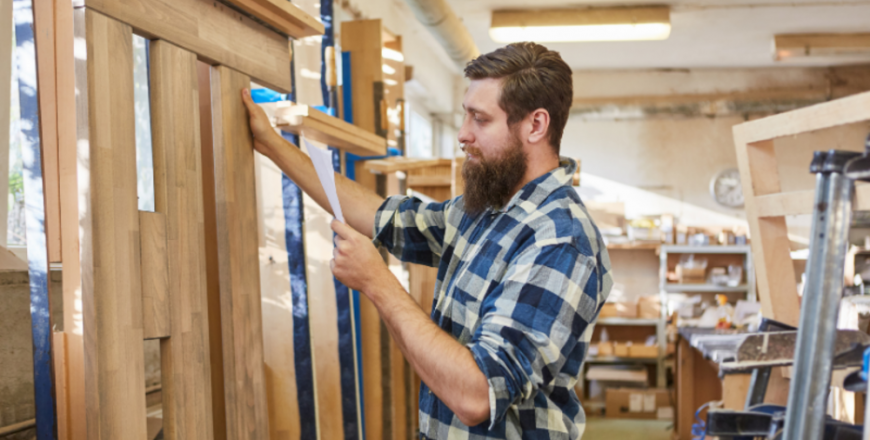
On a bespoke furniture maker apprenticeship course, you’ll help produce and assemble bespoke pieces of furniture to meet individual customers’ requirements.
As an apprentice custom furniture maker, you will collaborate with designers, production/ manufacturing managers, quality technicians, production leaders, and product developers.
You will need to work directly with designers and installation personnel. Bespoke furniture makers will work alone or in small groups with other makers, interacting with colleagues, suppliers, and, sometimes, buyers.
You will comprehend and challenge ideas, provide solutions, select materials, produce components, and assemble furniture using machines and manual production techniques.
As a bespoke furniture producer, you’ll also design prototypes to help bring thoughts to life and sophisticated jigs and templates. Wood, metals, glass, plastics, fabric, coatings, and other materials will be utilised.
What you’ll learn
On a bespoke furniture maker apprenticeship course, you’ll learn to:
- Conduct health and safety risk assessments.
- Propose solutions to any defects discovered in furniture-making concepts, such as whether the design can be created or inappropriate wood type.
- Recognise the materials used in furniture manufacturing, such as wood and timber and artificial composite materials.
- Manage furniture manufacture, which involves establishing deadlines and priorities to meet company objectives and delegating furniture-making duties to others.
- Calibrate measurement tools and properly use them.
- Create advanced jigs and templates to meet the needs of furniture manufacturers, such as Lock Jigs, Arc Jigs, and Frieze and Dentil Moulding Jigs.
- Set up the tooling required to meet the furniture-making specifications.
- Configure machinery, tools, and equipment to satisfy furniture manufacturing criteria.
- Fit, repair, and assemble components according to furniture production specifications.
- Create joints in compliance with furniture-making specifications.
- Repair any imperfections such as markings and blisters, defects, scratches, marks, density, holes, and weaving.
- Recognise trends in defects in furniture manufacture.
- Repair any faults found, such as blooming, moisture, temperature, blotching, runs, streaks, curing, and silicones (orange peel, fish eye).
- Use effective communication strategies at all levels, including written and verbal communication skills.
- Determine your own and other people’s training needs.
- Maintain your professional growth (CPD)
- Make pertinent comments and help others.
- Seek constructive feedback on your talents and methods concerning existing standards.
- Examine your knowledge and skills.
Entry requirements
You’ll usually need:
- Depending on the employer, but likely GCSEs or equivalent qualifications or relevant experience.
- Apprentices without level 2 English and maths will need to achieve this level before taking the end-point assessment.
Assessment methods
The End Point Assessment comprises three distinct assessment methods:
- Multiple-Choice Test
- Observation with questions
- Professional Discussion supported by ‘Portfolio of evidence
Duration, level, subjects and potential salary upon completion
- Duration: 24 months
-
Level: 3 – Advanced Apprenticeship
- Relevant school subjects: DT and art
- Potential salary upon completion: £22,000
Apprenticeship standard
More information about the Level 3 Bespoke Furniture Maker Apprenticeship standard can be found here.
Apprenticeship end point assessment
For more information about the End Point Assessment Process, please read the Institute of Apprenticeships’ information page
